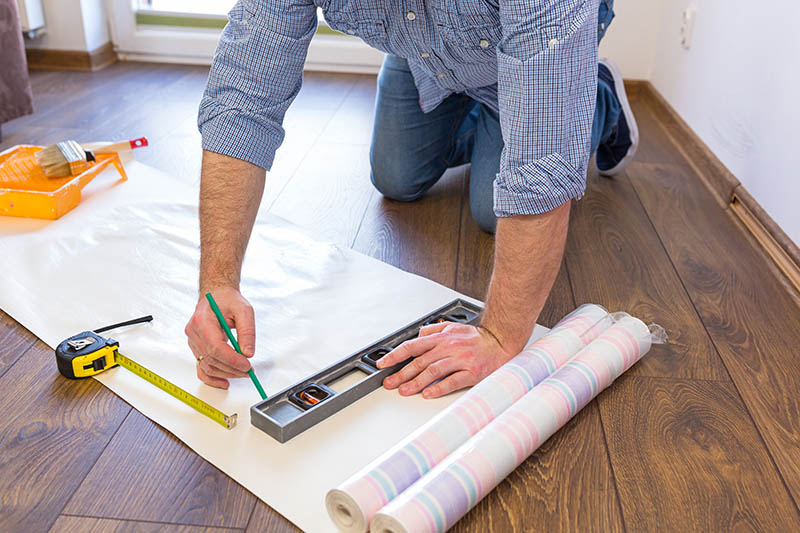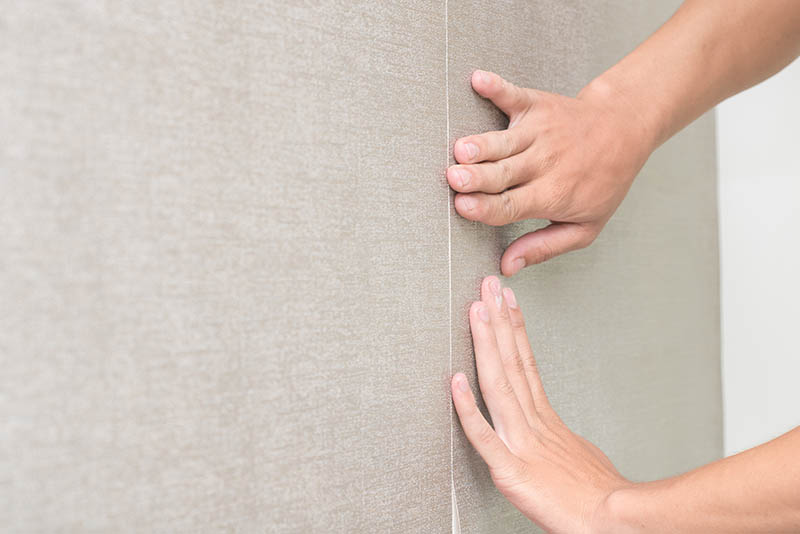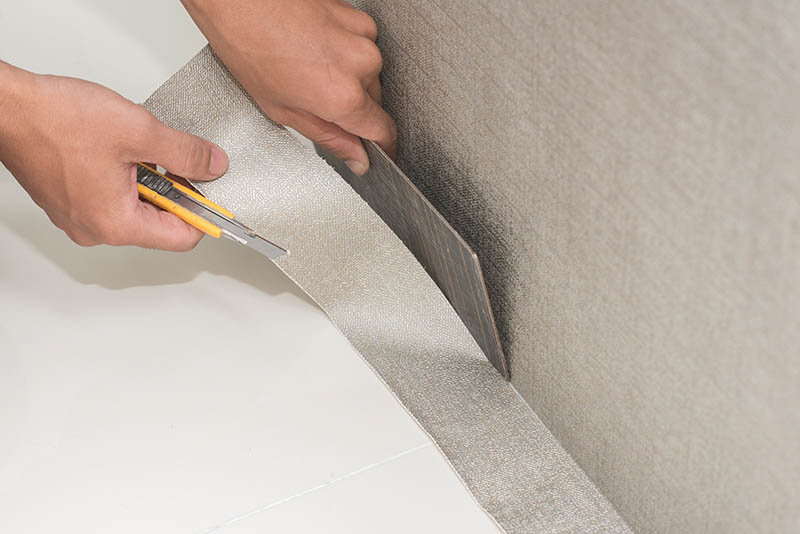How to Hang Wallpaper: 7 Expert Tips
-
Codee Chessher
- Last updated:

Wallpaper isn’t anyone’s favorite task, but it sure does brighten up a room, adding limitless patterns to any space. Applying wallpaper may seem straightforward, but it really helps to have prior experience and a list of quick tips handy. Let’s dive into some ways you can make wallpapering painless and fun.
 The 7 Expert Tips on How to Hang Wallpaper
The 7 Expert Tips on How to Hang Wallpaper
1. Prep the Paper
Before embarking on a wallpapering adventure, you’ll need to prep the wallpaper for the easiest installation. To do this, unroll the wallpaper and roll it up backward. Yes, you read that right.
Reverse roll up the whole roll to eliminate the paper’s memory. You’ll thank us later when the paper isn’t curling up as you go.

2. Constantly Keep it Level
Looks can be deceiving, and corners aren’t always perfectly straight. To make sure that when you start from a corner you’re starting off level, align a level beside the roll of paper. This will save you a ton of time by not realizing halfway through a roll that you’ve lined it up wrong from the beginning. Go about a quarter inch past your first panel of wallpaper and leave room for overlap as well.
3. Prep the Walls
If your wall needs to be painted, you’ll have to do that before you wallpaper it. Regardless, wallpaper adhesive sticks best to roughly sanded and semi-gloss walls. Matte finishes don’t work well, so be warned!
Next, you’ll have to prime the wall with a wall sizer or primer product, which will prime the surface for the wallpaper adhesive. Trying to stick on wallpaper without a primer is a fast track to poorly stuck wallpaper.

4. Seam Inside Corners
Some people line up their wallpaper plumb at the corners and think that’s good enough, but consider a different method. Run the roll ⅛-inch past the corner onto the adjacent wall and cut the roll from the top with someone holding the roll steady. Run a little bead of adhesive down the corner of the wall and use a seam roller to tuck or seam the corner in.
5. Consider Traditional Wallpaper Instead of Peel & Stick
Peel-and-stick wallpaper is extremely popular and advertised as a better decorating alternative for renters. Peel-and-stick is easier to remove when you redecorate but has trickier installation than traditional wallpaper.
Regular wallpaper adhesive allows you to reposition the roll if you make a mistake, but peel-and-stick adheres instantly. It’s a little extra work to prime the wall and deal with adhesive, but regular wallpaper is a more forgiving way to decorate.

6. Start Slowly
Especially if you’re new to wallpapering, start from the top and slowly work your way down. Hold a level at all times while slowly rolling down—it’s not a race. Corners and seams should be approached methodically, and it helps if you realize there’s no rush.
Take as much time as you need to line the wallpaper up perfectly because redoing it is a huge hassle. It’s easier to do it slowly and correctly the first time rather than go back and tear it all off later.
7. Don’t Be Afraid to Hire Help
Some areas like bathrooms call for extra help. Large spaces have minimal corners and obstructions, making them the easiest to paper. Because bathrooms have built-in sinks and toilets, they pose serious issues. There’s no shame in hiring a professional to cover that area for you to save the frustration—it’s only a fraction of the job.

Conclusion
Wallpaper can be intimidating if you’re excited about decorating a room just right, but it doesn’t have to be stressful. First, prepare the area like you would for painting. Take your time and make sure every roll is perfectly level before pressing it in place. Seams can be tricky at first, but you’ll quickly get the hang of them and have the whole house wallpapered.
Related Reads:
- How to Hang Prepasted Wallpaper: 18 Expert Tips
- How to Hang Peel and Stick Wallpaper – 11 Expert Tips
Featured Image Credit: Skyliz, Shutterstock
Contents
 The 7 Expert Tips on How to Hang Wallpaper
The 7 Expert Tips on How to Hang Wallpaper